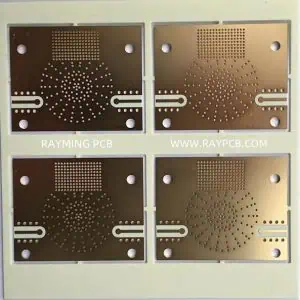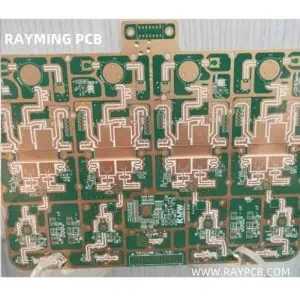When developing electronic products, one of the most critical decisions engineers and product developers face is where to manufacture their printed circuit board (PCB) prototypes. The choice between European and Chinese manufacturers can significantly impact project timelines, costs, quality, and overall development experience. This comprehensive analysis explores the key factors to consider when deciding between these two major manufacturing regions.
Cost Considerations: The Bottom Line Impact
The most apparent difference between European and Chinese PCB prototyping lies in pricing. Chinese manufacturers typically offer significantly lower costs, often 30-70% less expensive than their European counterparts. This cost advantage stems from several factors including lower labor costs, economies of scale, and government subsidies supporting the electronics manufacturing sector.
Chinese PCB houses have invested heavily in automation and high-volume production capabilities, allowing them to spread fixed costs across larger production runs. Even for prototypes, this infrastructure advantage translates to competitive pricing. A typical 4-layer prototype PCB that might cost €50-80 from a European supplier could be produced in China for €15-30, including shipping.
However, European manufacturers often provide better value propositions when considering total project costs. Their proximity reduces shipping expenses and eliminates import duties, while faster turnaround times can accelerate development cycles, potentially saving weeks of engineering time worth thousands of euros. For time-sensitive projects or when multiple prototype iterations are required, the higher upfront cost of European manufacturing may prove more economical overall.
Quality and Manufacturing Standards

Both regions are capable of producing high-quality PCBs, but their approaches and certifications differ significantly. European manufacturers typically adhere to stricter environmental and quality standards from the outset. They commonly maintain certifications such as ISO 9001, ISO 14001, and IPC standards as baseline requirements rather than premium offerings.
Chinese manufacturers have made remarkable improvements in quality over the past decade. Leading Chinese PCB houses now rival their Western counterparts in technical capabilities and quality control. However, quality can vary significantly between manufacturers, making vendor selection more critical. Top-tier Chinese facilities often exceed European quality standards, while lower-tier suppliers may struggle with consistency.
European manufacturers generally provide more comprehensive quality documentation and traceability. Their quality management systems are often more transparent, with detailed process documentation and easier access to quality managers for discussions about specific requirements. This transparency can be crucial for projects requiring extensive documentation or compliance with strict regulatory requirements.
The manufacturing processes also differ in their approach to quality control. European facilities typically implement more conservative design rules and manufacturing parameters, resulting in higher yields but potentially limiting the ability to push technological boundaries. Chinese manufacturers are often more willing to attempt aggressive design specifications, though this may come with higher risk of manufacturing defects.
Turnaround Times and Logistics
Turnaround time represents one of the most significant differences between regional choices. European PCB manufacturers typically offer 3-10 business days for standard prototypes, with some specializing in same-day or next-day service for premium pricing. This rapid turnaround enables faster design iteration cycles and can significantly accelerate product development timelines.
Chinese manufacturers usually require 7-15 business days for production, plus 3-7 days for international shipping. However, some Chinese suppliers now offer expedited services with 3-5 day production times, though at premium pricing that may approach European cost levels. The total time from order to receipt typically ranges from 10-22 business days when using Chinese suppliers.
Shipping logistics add another layer of complexity when working with Chinese manufacturers. International shipping costs have fluctuated significantly in recent years, and customs delays can add unpredictable time to delivery schedules. European suppliers benefit from streamlined intra-EU shipping, with predictable delivery times and no customs complications for EU-based customers.
The reliability of delivery commitments also varies between regions. European manufacturers typically provide more accurate delivery estimates and have fewer external factors affecting their ability to meet promised dates. Chinese suppliers may face delays due to national holidays, shipping disruptions, or regulatory changes that can impact project timelines unexpectedly.
Technical Capabilities and Specialization
Both European and Chinese manufacturers offer sophisticated technical capabilities, but their specializations often differ. Chinese manufacturers excel in high-volume production techniques and have invested heavily in advanced equipment for cutting-edge technologies. Many Chinese facilities operate the latest generation of manufacturing equipment and can handle extremely complex designs with fine pitch components and advanced materials.
European manufacturers often specialize in niche applications and custom solutions. They typically provide superior engineering support and are more willing to work on unusual or challenging designs that require extensive collaboration. European suppliers often maintain closer relationships with their customers, offering design advice and optimization suggestions that can improve product performance or manufacturability.
The range of materials and substrate options varies between regions. Chinese manufacturers typically stock a broader range of standard materials and can often accommodate special material requests more quickly due to their larger supplier networks. European manufacturers may have limited material options but often provide superior material traceability and certification documentation.
Advanced technologies such as embedded components, flex-rigid designs, and high-frequency applications are available from both regions, though the approach differs. Chinese manufacturers often focus on cost-effective implementation of advanced technologies, while European suppliers emphasize reliability and performance optimization.
Communication and Support

Language barriers and time zone differences significantly impact the working relationship with Chinese suppliers. While many Chinese manufacturers employ English-speaking staff, technical discussions about complex requirements can still present challenges. Miscommunications about specifications or requirements can lead to incorrect prototypes and project delays.
European manufacturers offer the advantage of shared languages, similar business cultures, and overlapping working hours. This facilitates real-time communication during the design and manufacturing process, enabling quick resolution of questions or issues that arise during production.
The level of engineering support also differs between regions. European suppliers typically provide more comprehensive pre-production support, including design rule checking, manufacturability analysis, and optimization suggestions. Chinese manufacturers are improving in this area but may offer more limited engineering consultation, particularly for complex or unusual designs.
Customer service approaches reflect different business cultures. European suppliers often emphasize relationship building and long-term partnerships, providing personalized service and dedicated account management. Chinese manufacturers may focus more on efficient order processing and standardized service levels, though leading suppliers are increasingly investing in improved customer service capabilities.
Making the Decision: Key Factors to Consider
The choice between European and Chinese PCB prototyping should consider several project-specific factors. For early-stage prototypes where cost is the primary concern and timeline flexibility exists, Chinese manufacturers often provide the best value. Their ability to produce complex designs at low costs makes them attractive for projects with tight budget constraints.
Time-sensitive projects or those requiring multiple design iterations benefit from European suppliers’ faster turnaround times and easier communication. The ability to quickly discuss design changes or manufacturing questions can significantly accelerate development cycles, particularly for complex or innovative designs.
Regulatory requirements and documentation needs may favor European suppliers, particularly for medical devices, automotive applications, or other highly regulated industries. European manufacturers’ familiarity with EU regulations and quality documentation practices can simplify compliance processes.
Project volume and future production plans should also influence the decision. If prototypes will eventually transition to high-volume production, establishing relationships with Chinese manufacturers during the prototype phase may provide advantages for future manufacturing partnerships.
Conclusion
The decision between European and Chinese PCB prototyping involves balancing multiple factors including cost, quality, timeline, and project requirements. Chinese manufacturers excel in cost-effectiveness and technical capabilities, making them ideal for cost-sensitive projects with flexible timelines. European suppliers offer advantages in speed, communication, regulatory compliance, and engineering support, making them preferable for time-critical or highly regulated applications.
Rather than viewing this as an either-or decision, many successful companies develop relationships with suppliers in both regions, selecting the most appropriate option based on specific project needs. This hybrid approach provides flexibility while maximizing the advantages each region offers. Ultimately, the best choice depends on your specific project requirements, budget constraints, and development timeline priorities.




